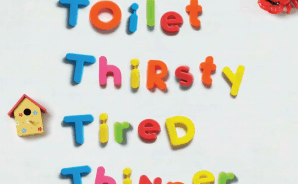CEREBRAL OEDEMA: DO WE REALLY KNOW THE CAUSE?
We recently had a child with (diabetic ketoacidosis)DKA in our department and the subject of fluid resuscitation came up. Also the Queensland Government guidelines on the Emergency Management of children with DKA has recently been produced.
I thought it was timely to revisit a blog I wrote in 2014 on the evidence on this topic, as well as set up a teaching module on DKA ( more on this at the end)
Cerebral oedema is the most feared complication in children presenting with DKA. It occurs in about 1% of cases but has a mortality rate of up to 90% (Waldorf J et al Diabetes Care 2006; 29:1150-9). Patients will have a decreased conscious state and may also have cranial nerve palsies, headache and/or bradycardia and hypertension.
Its incidence has remained the same since it was described in 1936 and although we have clues as to what may contribute to it, and we know that some patients have subclinical cerebral oedema even at presentation(Krane et al NEJM 1985;312:1147-51), we still can’t predict who will get it, nor greatly affect its high rate of mortality.
There are theories of causative factors, most of which are vasogenic or osmotically based, but the studies are small or retrospective, or both.
WHAT CAUSES IT? – THEORETICALLY
One theory relates to osmolytes accumulating in brain cells. These are the compounds that maintain normal cell volumes. As extracellular osmolality decreases rapidly with treatment, water flows rapidly onto these cells causing the brain to swell.
Another theory relates to Na+ / H+ exchanger, such that a correction of acidosis results in Na and water passing onto the brain cells, resulting in oedema.
WHAT CAUSES IT? – IN PRACTICAL TERMS
We believe that the following increase the chance of developing cerebral oedema:
1 Newly diagnosed diabetes
2 Duration of symptoms
3 Rapid change in Osmolality (2xNa + U + Glc): i.e., a rapid decrease in Glucose and in Sodium
4 Initial pH < 7.1
……………. and in more recent studies (Glaser N et al NEJM 2001;344:264-269)
5 Decrease in CO2
6 Increased Urea
7 If treated with Bicarbonate
WHAT DOES THIS MEAN IN TERMS OF TREATMENT of DKA?
FLUIDS
If the patient is hypotensive and crashing then fluid resuscitation is necessary. No question about it. However, how much we give may matter. In some of the work published there is an indication that more than 40ml/kg given over the first 4 hours may predispose to cerebral oedema.
We seem to be conditioned to give 20ml/kg to every child. My approach is a little less aggressive. I aim at 5ml/kg if the child is very unwell and crashing. I then review and give it a little time ( that may only be minutes) before more fluids are given. The point is, unless the child is crashing we don’t have to give large volumes, we can pull back a little. The recommendations look at tolerating a systolic blood pressure of (70 + 2 x age)mmHg. We must remember that kids don’t have much room, when they decompensate and that hypotension is a late sign. However it is this very group of children that we may be harming. If the blood pressure is OK, leave them be. If you really have to give fluids ( because it is so conditioned that its an automatic reflex), give 1ml/kg and wait.
The usual approach to fluids is to calculate the deficit and ongoing maintenance needs and give over 48 hours.
INSULIN AND GLUCOSE LEVELS
Large rapid drops in glucose, or a rapid decrease in osmolality can, according to the osmotic theory, cause cerebral oedema. Hoorn et al (J pediatr 2007:150: 467-473), found that a drop in osmolality from 304 + 5 to 290 + 5, was associated with increased cerebral oedema.
WHAT SHOULD WE TAKE AWAY FROM ALL OF THIS AND WHAT SHOULD WE DO?
The evidence isn’t great. What we see is that the more acidotic you are, the more deranged your electrolytes, the more abnormal your physiology, the worst you do. The sicker kids did badly. Common sense.
Firstly it’s important to say that it’s very rare that you will see one of these cases unless you are working in an ED that sees lots of kids. That’s why its even more important to know what to do, because its not that frequent.
If a child is sick and haemodynamically crashing, then give fluids. I don’t give 20ml/kg of normal saline right away. I will give 5-10ml/kg and then review. I can always give more if needed.
I don’t give a bolus of insulin, I start an infusion(after fluids are initiated and probably not before 1-2 hours) and wait for gentle lowering of the blood sugar i.e.., < 5mmol/L drop per hour. Things improve over hours. Nothing needs to happen quickly here.
If I think a child has cerebral oedema, mannitol 1g/kg IV is the treatment of choice. You must discuss these patients with endocrine/Paediatrics and ICU. If the conscious state deteriorates to the point where protection of the airway is needed, or if airway control is necessary to paralyse and lower intracranial pressure( if this indeed assists in this case), then beware not to hyperventilate the patient. Hypocapnia from mechanical ventilation has been associated with this condition(Glaser N et al NENM 2001;344:264-269)
Cerebral oedema, if it occurs, is a difficult condition to treat and the outcomes aren’t good. We don’t really know if our treatment contributes to the development. However, we need to do everything we can, to ensure it doesn’t.
Click below to complete a real time case module on our emcore website online, that will help reinforce the management of DKA.





